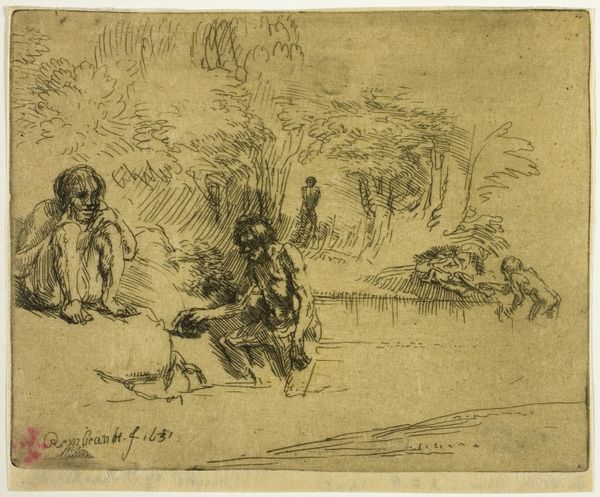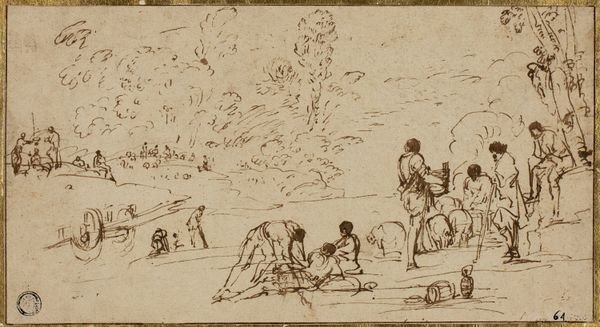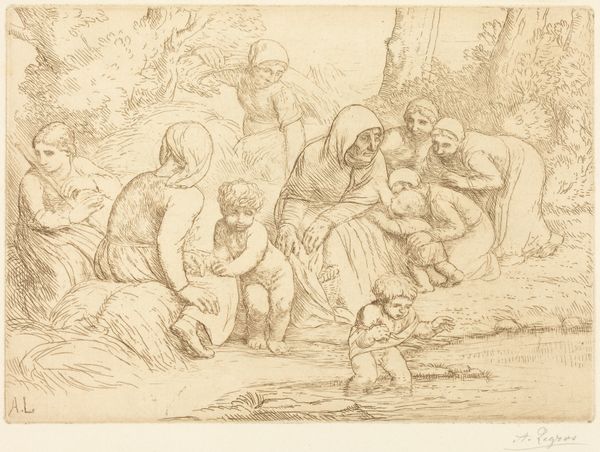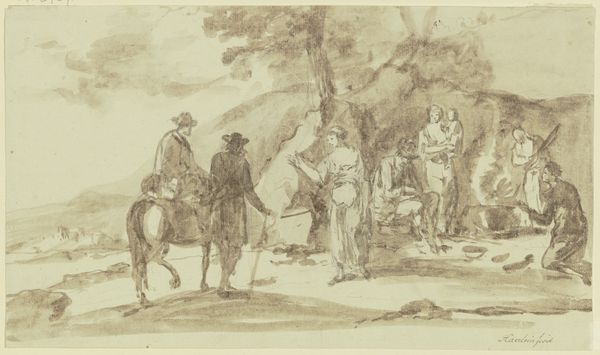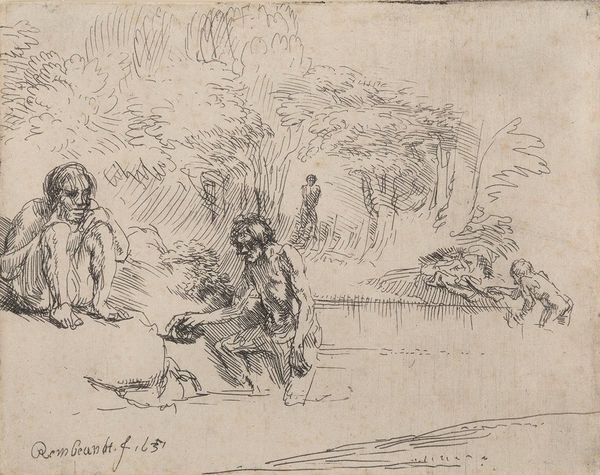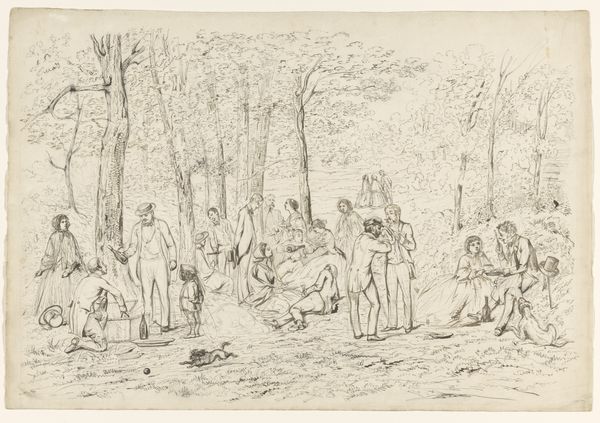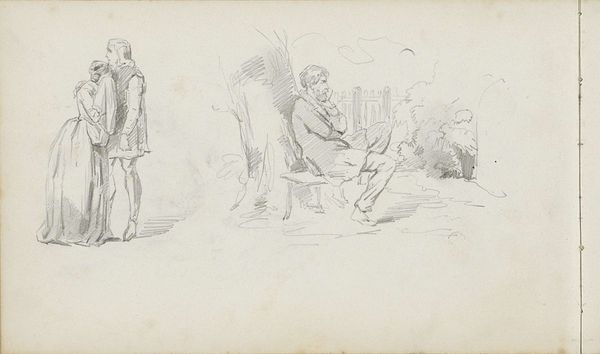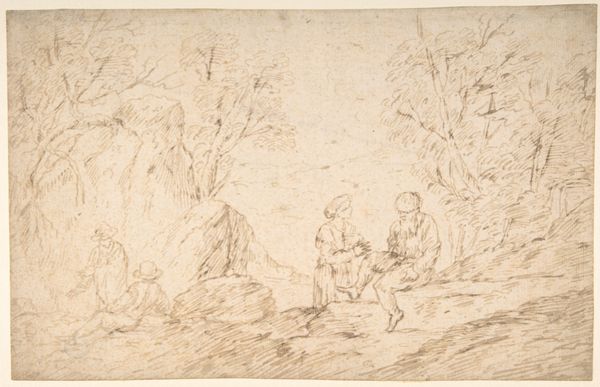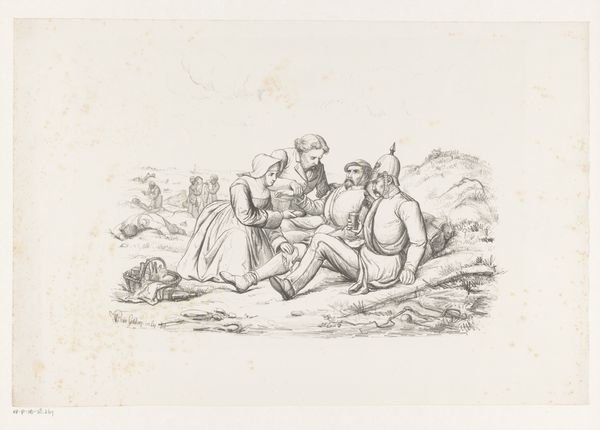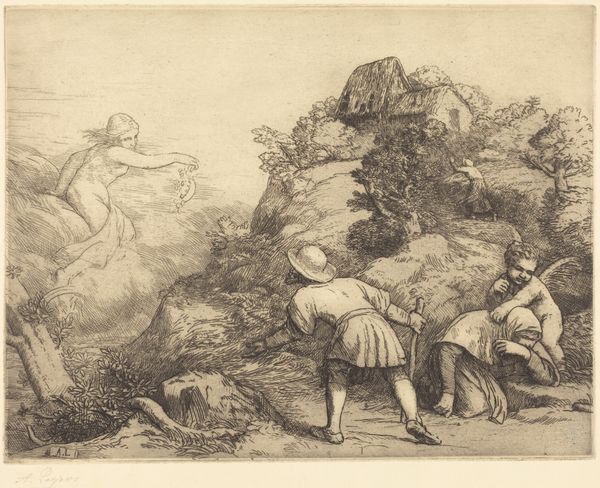
Bibelsk scene: Kristus siddende med tre apostle på et bjerg 1840s
0:00
0:00
drawing, ink
#
drawing
#
ink drawing
#
landscape
#
figuration
#
ink
Dimensions: 212 mm (height) x 277 mm (width) (bladmaal)
Curator: This ink drawing, tentatively titled "Biblical Scene: Christ Sitting with Three Apostles on a Mountain," was created by Dankvart Dreyer in the 1840s. You can find it here at the SMK, the National Gallery of Denmark. Editor: It feels immediately classical, almost serene. The delicate lines create a sense of tranquility. But the composition, with its varying levels and open space, is what really grabs me. Curator: Absolutely. It reflects the prevalent religious sentiment and revival of biblical themes common in Danish art of the mid-19th century. The landscape setting evokes the Holy Land and draws parallels between Danish nature and biblical narratives, speaking to the cultural context of the time. Editor: Observe how the artist uses line weight and hatching to suggest volume and light. Notice how Dreyer uses vertical lines of Christ's garment and juxtaposes them to the soft, curving forms of the landscape. Semiotically, we could say this denotes his divinity. Curator: But to take this interpretation even further, such depictions served a public role. The image offered viewers a means to contemplate religious identity and moral guidance through relatable depictions within a specific time. Think of the burgeoning Romantic movement. Editor: Yes, the architectural details in the background are suggestive. They subtly balance realism and symbolism, enriching the scene's deeper narrative qualities. Did he have those locations in mind, I wonder? Curator: Possibly! His focus on a simple, yet profound encounter captures a timeless element of faith. He could have encountered the domes there and decided to feature them. Editor: Considering the visual balance of this work in conjunction with the title, you truly can find a harmonic concord. Dreyer's composition highlights themes of teaching, community, and faith, drawing the viewer's eye inward toward an unseen knowledge. Curator: I think looking through a social lens like that reminds us art is shaped by its own historical moment as well. A drawing like this offers us access to the past as a testament to cultural values of the time. Editor: Ultimately, whether analyzed for its compositional structure or symbolic nuances, this artwork clearly encourages quiet contemplation, inviting all observers to explore our personal spirituality through artistic representation.
Comments
No comments
Be the first to comment and join the conversation on the ultimate creative platform.
